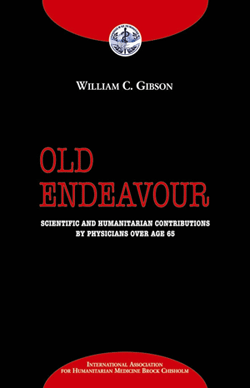Book review: Old Endeavour: Scientific and Humanitarian Contributions by Physicians After 65.
By William C. Gibson, MD.

Palermo: International Association for Humanitarian Medicine, 2007. ISBN 987-88-902020-1-7. Hardcover. $30. To order, e-mail contact@iahm.org.
British Columbia’s elegant man of letters, Dr William C. Gibson has, in his 93rd year, written another book. Old Endeavour is a compilation of snapshot biographies of the medical, scientific, and humanitarian contributions of medical luminaries from the past few hundred years.
Dr Gibson’s well-researched chronicles describe the amazing length and breadth of the work these individuals managed to complete after the age of 65. Many of the names will harken back to your student days, such as Harvey Cushing, Michael De Bakey, Oliver Wendell Holmes, Dorothy Hodgkin, Shiela Sherlock, Sir William Osler, to name a few. I particularly enjoyed reading the very insightful vignettes that Dr Gibson uses to bring the lives of these giants of medical history back into focus.
After reading this book I found it more than a little embarrassing to discover just how productive these giants of medical science were in the autumn of their careers, some only deciding to “leave it to those younger folk” when, in their 90s, they finally decided to slow down a bit.
I decided not to do the review of this book until I had passed my 65th birthday just so I could write from a sympathetic perspective. However, now that I have accomplished both the reading and the acquisition of an MSP Gold Card, it is clear to me that this book will find an interested, appreciative audience among all physicians irrespective of age or professional persuasion.
I encourage you to read this little gem of a book as it really does reconnect you with our shared, immensely rich history. To my aging mind, it is an extremely important thing for all of us to remember that the reason we enjoy such a privileged position in society is because we are all standing on the shoulders of giants.
Ever since I attended a lecture by Dr William Gibson on the history of medicine at the Woodward Memorial Library in my first year at UBC Medical School, I have been smitten by the man’s energy, intellect, and enormous passion for the role of medical science in our ongoing pursuit of knowledge.
Dr Gibson has been a beacon for me, and as I ponder what my years beyond 65 should be filled with, I sense once again that Dr Gibson is lighting the way for me.
My advice: read this book. The light just might go on for you too.
—James A. Wilson, MD
Richmond
